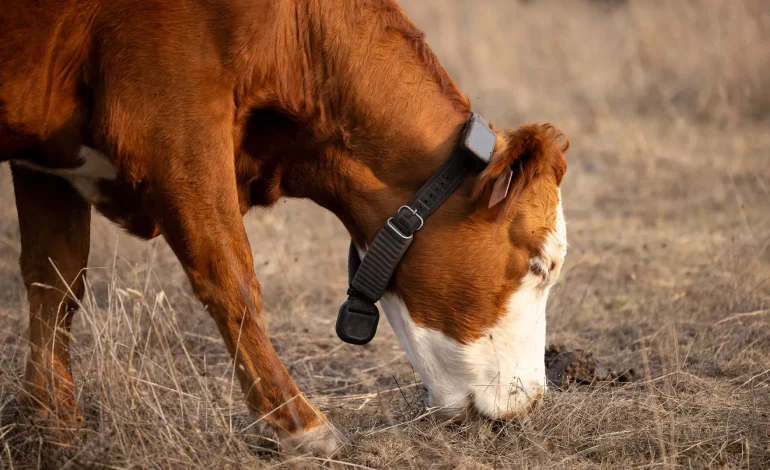The original story by for Wyoming Public Media.
Curious how a fence with no posts or wire actually works? Sheridan County ranchers and the Sheridan Community Land Trust (SCLT) are teaming up to pilot virtual fencing, and they’re inviting the public to a hands-on field day Monday, Nov. 3, at the Big Goose Natural Area. You’ll see the tech in action — on real cattle — before deciding if it fits your operation.
Think of it like an invisible dog fence, scaled for rangeland. Ranchers draw pasture boundaries in a phone app; cattle wear GPS collars connected via cell or satellite. When animals approach a digital boundary, the collar beeps or buzzes as a cue to turn. The system can also locate animals and move herds automatically between pastures on a schedule.
“Virtual fencing gives producers infinite possibilities for how they manage land,” says John Graves, SCLT’s director of conservation.
Want cows to hammer invasive cheatgrass for a week? Draw the line there. Need to protect a wetland or rest an overgrazed bench? Shrink access without pounding T-posts. You can even leave a ‘gate’ in the digital fence so cattle can reach a hardened watering point without trampling an entire creek bank.
The tech is catching on in Wyoming — there was a packed symposium in Cody earlier this year — but it’s still new in the US and not cheap. Ballpark numbers, per Graves:
- Halter (NZ-based; solar collars): about $66 per head per year (rental, herds 100+).
- Vence (owned by Merck): about $350 per collar (purchase).
- Transmission towers (if needed): roughly $4,500–$10,000 each, depending on terrain and remoteness; count varies by ranch.
To lower the barrier, SCLT is partnering with three local producers on a three-year pilot. Thanks to a Nature Conservancy grant, SCLT is covering tower costs, while ranchers pay for collars and connectivity. More than 100 head across different corners of the county are already collared. The goal is to document what works, what doesn’t, and what can be fixed — plus monitor vegetation and stream corridors with photo points over time.
Graves stresses this isn’t about scrapping every barbed-wire mile.
“It’s another tool in the toolbelt — and from a wildlife angle, it’s the ultimate wildlife-friendly fence because there is no fence,” he says.
Fewer physical barriers can mean easier movement for deer and pronghorn across working lands.
If You Go: Virtual Fencing Field Day
- When: Monday, Nov. 3, time TBD (check SCLT’s channels for exact start)
- Where: Big Goose Natural Area, Sheridan Community Land Trust
- What’s happening: Live demo with the land trust’s grazing lessee’s cattle; walk-through of the app and collar cues; Q&A on costs, coverage, and grazing strategy.
- Who’ll be there: Halter reps (solar collar maker) to explain hardware, connectivity, and setup.
If you’re weighing riparian protection, targeted grazing, labor savings — or just curious about ditching miles of hot wire — the field day is your chance to kick the (virtual) tires before investing.










The latest news in your social feeds
Subscribe to our social media platforms to stay tuned